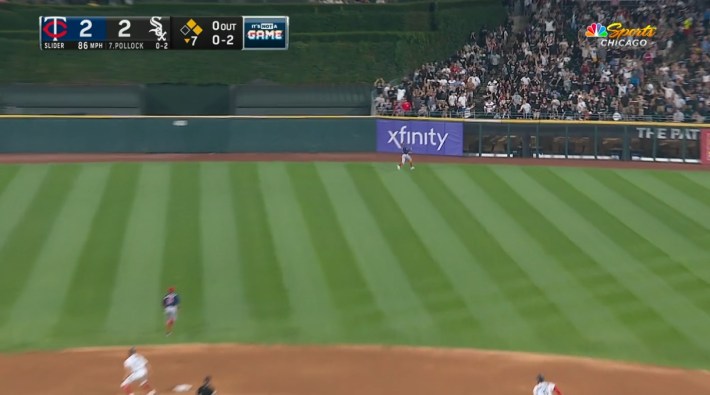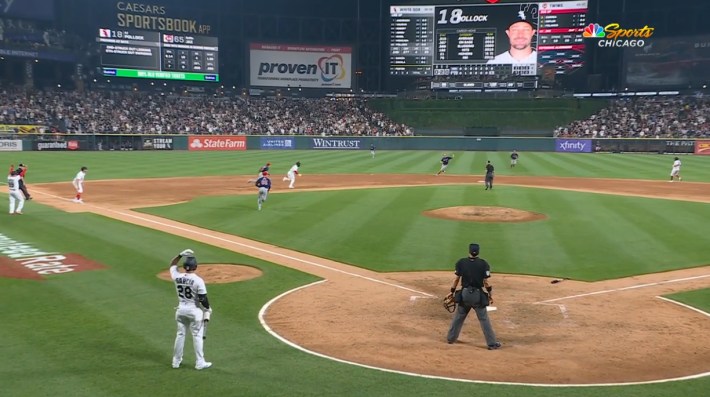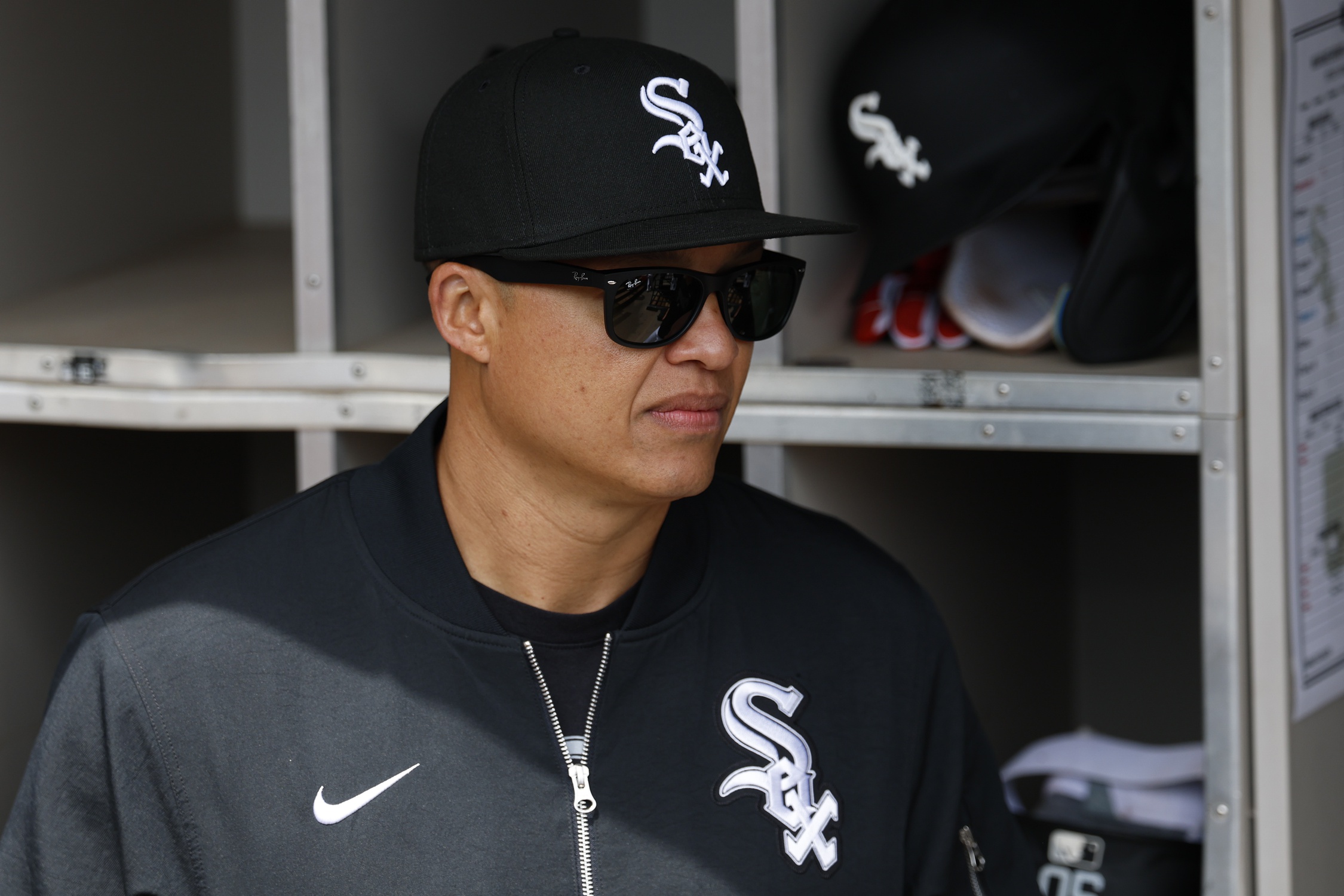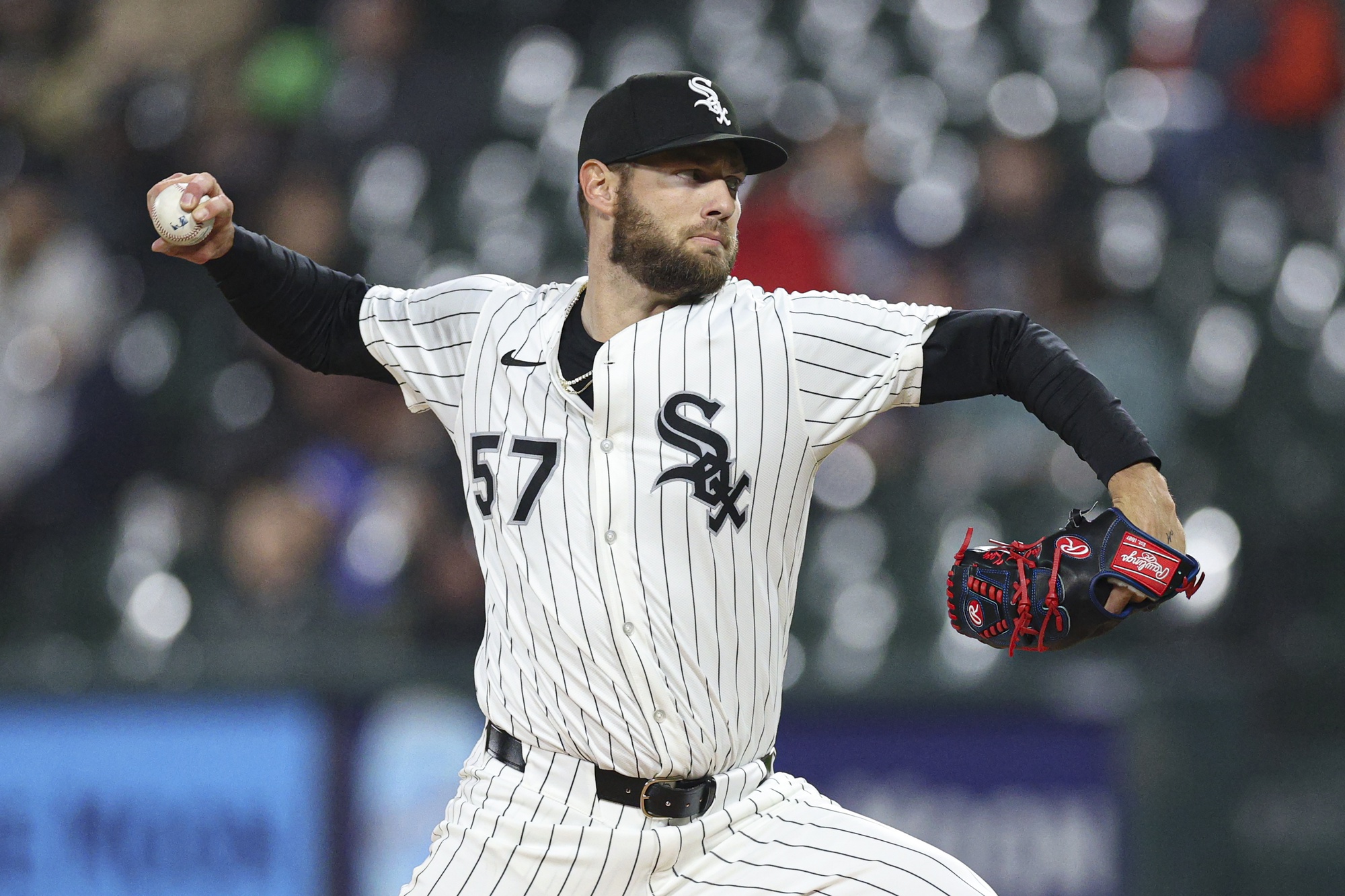It's about 16 hours after the White Sox ran into the first-ever 8-5 triple play that doomed them to a 6-3 loss in 10 innings to the Minnesota Twins on Monday night, and I've watched the play at least 16 times on both broadcast feeds.
It's not because I'm a glutton for punishment. I just want to understand it.
Sometimes when I'm at a modern art exhibit and an installation or entire wing fails to grab me, I'll shift my attention to the people who appear to be appreciating a work, and then I'll try to see what they see. I don't want to be the philistine who looks at a plain blue canvas worth millions and only thinks that a kid could do that, but I also don't want to pretend to understand something I don't. Besides, isn't my reaction, as unsophisticated as it may be, part of what that piece of art intends to inspire?
Anyway, a couple of children definitely could've done what Adam Engel and Yoán Moncada did in the seventh inning on Monday night, except it would've been 1) slower and 2) adorable. But here's a case where sitting down and devoting the time to letting the visuals wash over me reveals hidden depths. There's a reward to discovering new emotions, even if most of them are all in the "disgust" family.

This is the last I saw of Adam Engel before Byron Buxton hauled in AJ Pollock's drive to deep right center, and when Buxton caught it, my emotions were still net positive. I've calibrated my expectations for Buxton to track down any fly with that kind of hang time, but because Engel appeared to be tagging, it still appeared to be a productive out that amplified the pressure on Griffin Jax, whom the White Sox had on the ropes.
Instead, Engel is frozen a couple, three feet from second base. To the extent that I can empathize, it's because I spend some White Sox games playing Ken Griffey Jr. Presents Major League Baseball on SNES emulators, and I sometimes forget what key is what button.

But Engel had the luxury of managing his own functions through his native controller, so that's no excuse. The explanation he gave isn't much of one either.
At the moment Engel broke for third, the ball is still about four stories high in the air. Engel read one cue and ignored all the others -- the fans anticipating a potential interaction with the baseball, Buxton still looking up, the crowd withholding its roar. He just knew what he wanted to happen. He wanted to live that moment.

Here is said attempt at actualization, and this is the last time where Engel and Moncada both thought things were going great. Everybody else in the park, including all the fans behind them in sections 104, 105 and the Miller Lite Landing, knows something they don't.

At this moment, I wonder how far Moncada thinks he has to run in order to be safe. If he thinks he only needs to outrun Gio Urshela to second base, then his impulse to salvage the play is understandable. He can't count on Urshela fielding it cleanly, having his feet about him, or making a calm flip to second base.
If he knows that he actually has to run to first because the ball is caught, that he has to run about 150 feet including a re-touch of second base while hoping he eludes and evades four to five Minnesota Twins, I imagine this is what drowning feels like. Even Steve Stone, who filters out just about all his visceral reactions before he forms thoughts into sentences and paragraphs, can't help but let out a pained "no" underneath Jason Benetti's play-by-play.
Neither Joe McEwing nor Leury García know exactly what to do with their hands. Their vocabulary limits them to saying things like "hold up," or "keep going," or "slide, and to this side." They don't know a combination of gestures that will CTRL-ALT-Z the inning. If I'm lip-reading García's arms correctly, I think I can make out "imbeciles."

About 10 seconds after Buxton makes the catch, Engel finally realizes what happens. We can assume that he didn't know the facts beforehand because he's dancing off third while Moncada attempts his retreat, which is the move of a guy who thinks he's allowed to keep running forward. A guy who knows that Buxton caught the ball probably tries to go hide in the tarp at that point.
I'd be curious what would happen if the Twins tagged out Moncada without the immediate knowledge that Engel never tagged. Does he just stand on third and hope nobody notice, or does he try to pull a Germany Schaefer and steal the base behind him?

Over the previous three games, Seby Zavala has been caught rounding second base too far. He's also fallen while rounding second base and barely making it it back, and he's stopped at second base when Buxton was giving him third. He's overly familiar with his GPS losing signal in that part of the park. He's the last one who should be able to judge what he just saw. He is free to judge and judge harshly
Zavala's blank stare takes a back seat to La Russa's literal slack jaw. Why was Engel not tagging? Why did Moncada keep running when the play was in front of him? Why did he not just remain content with his Hall of Fame ring, three World Series titles and cushy front office advisory roles? There are only bad answers.






